
The accelerated modifications in the technology context, have boosted the evaluation of teaching approaches worldwide. Now, we need to find out new methods to learn things. It is a challenge for the researchers, as well as teachers. They need to magnify the content absorption while maintaining the distinctiveness of thoughts.
Coming to the current scenario, personal computers have transformed the way humans communicate with the world. Yes, you are going in the right direction. I am talking about Augmented Reality (AR). By integrating the best of both the worlds, it presents itself as a wonderful solution for numerous issues. The technology can be applied to any domain and education is not the exception.
What Augmented Reality Actually Is?
Augmented reality is one of the mutations of VR (Virtual Reality). It can be perceived as the initiation of artificial stimuli over real ones by using multisensory technology. If defined in another way, it involves virtual information on human senses, hence improving the man-environment relationship. These are its 3 key characteristics:
-
Presence of virtual elements in real context
-
Interactivity with reality
-
Placing of virtual objects as per the reality in question and dominance over all senses
What AR technology does is creates a voluntary illusion that we use to refine the sense of vision. With this, we can include the information of surroundings on our site or of any other appropriate data at the time, such as notifications, schedules, updates, etc. This feature is easy to implement in education.
Current Status of AR
AR is a quickly evolving technology. Tech giants, including Google and Apple working quite hard, in order to enhance the app development frameworks. With Apple’s ARKit and Google’s ARCore introduction, developers now have access to some effective frameworks to create AR apps. Now, it is apparent that AR has a high volume of growth. The examples of AR are prevalent in gaming, marketing, movies, travel, education, etc. This technology gives enough opportunities for existing and new businesses. Seeing its rise in the market, today I am going to discuss its advantages in education. Before that, have a look at these findings and statistics on AR to learn its future market potential.
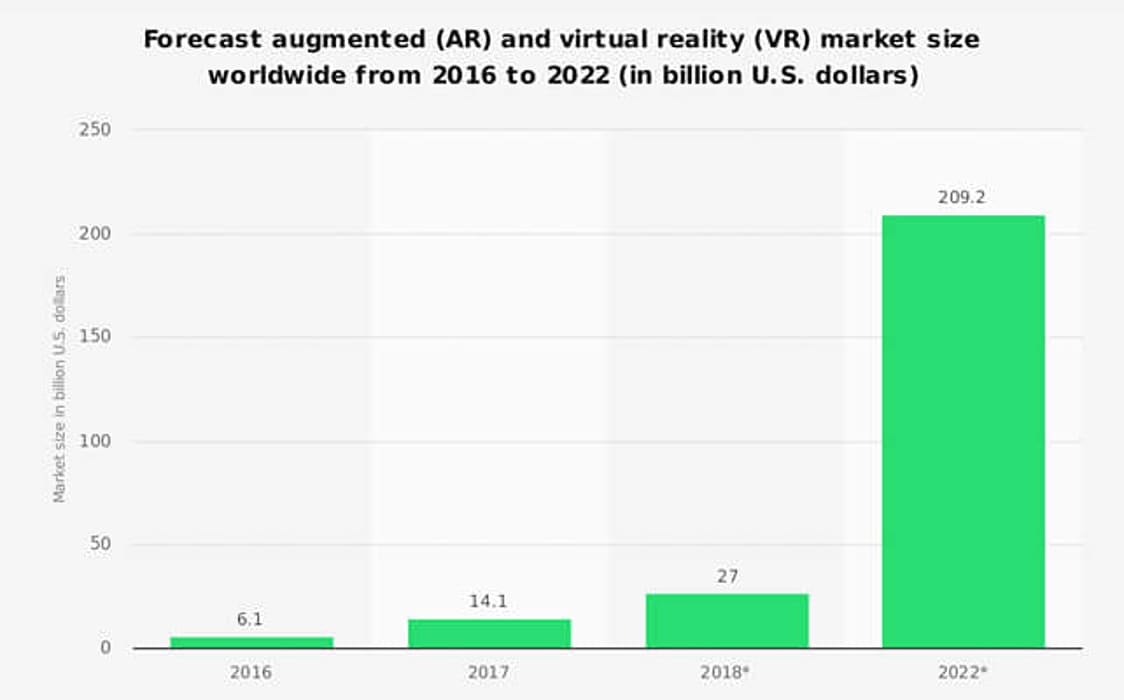
The fact that we can mix reality with virtual objects is an interesting prospect. Moreover, advances in technology, learning methodologies, and new teaching have boosted the learning experience in education. It offers those skills to the students that will benefit them to grow professionally and personally.
Many educational institutions have adopted a proactive strategy, where students are encouraged to seek information, in order to solve issues. Collaboration is one of the most crucial parts of the educational environment. However, still, the traditional learning model barely stimulates it.
Integrating the AR content book strategy with inquiry-based learning systems will give us a proactive and social experience. Eventually, the subjects can be connected to students’ lives. Getting confused? Just relax! I am going to tell you some key benefits of augmented reality in the education field.
Augmented Reality Classroom
Teachers are endeavoring to begin utilizing AR in classroom exercises, generally, to help their class’s materials with AR features. It might interest students and motivate them to study. Including additional data like the short life story of a man, a few realities about different sorts of stuff, geolocation of recorded events/visual models of math idea would give students more extensive comprehension about the subject. Wnuk and Oleksy (Universities) by utilizing AR tech could reproduce historical places of Warsaw, Poland. Moreover, students can see the streets of Poland on their cell phones. They even might go for a stroll there.
By doing homework, getting a more profound comprehension of a home task, students may examine pages of homework to get content, sound or video tips from their instructors that may help them in tackling issues.
By examining photographs of students and instructors, student boards may get additional data associated with them. It might help to make firm associations in the gatherings. Utilizing AR for the scanning of the cover book may get a crisp review of a book and decide would they require it or not. Wikitude and Layar AR Browsers enable to give short reviews of books, as well as magazines when their covers are scanned through applications.
What about when you were instructing a history topic? History assets are famously costly (frequently because of the materials utilized or the detail included) however utilizing applications like the Dragon Activelens and the Inspyro's Sigurd, you can put Viking antiques before each student. All this is possible to make your education precise without any cost.
11 reasons for Using AR Features in Education
Most of the presentations, I have made solely focused on AR. This is one of the reasons that I am really excited to talk about its advantage in the education field.
1. Makes Everything Possible
Who wouldn’t wish to bring a dinosaur in their classroom? Anyone of you? No, right? Let’s forget about the dinosaur. Imagine you are in your science class, studying about planets and you get the chance to see them, which almost looks real. Sounds super interesting, isn’t it? Do you think, I am beating about the bush? No. All this is possible.
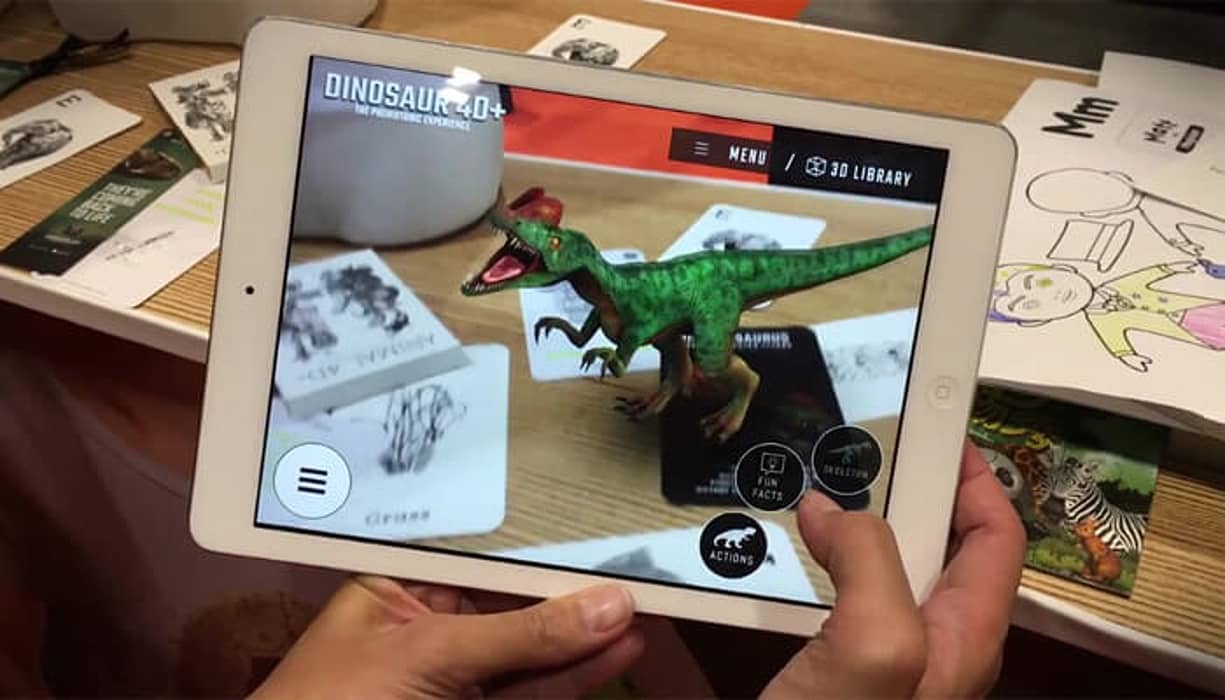
Augmented Reality can create some amazing wow moments in your classrooms. Specifically, when the technology is so nascent. Also, has not become fully embedded in everyday life. There are a number of examples that can show the importance of AR.
2. Perspective Control
When looking at an AR application, one question that always comes into my mind. Want to know? The question is does this practical view of things would have any impact on students learning in education? I mean, is there any advantage of implementing using augmented reality in the classroom? The answer is a big yes. Students more than seeing a similar model on a touch screen device can rotate, manipulate, and scale it.
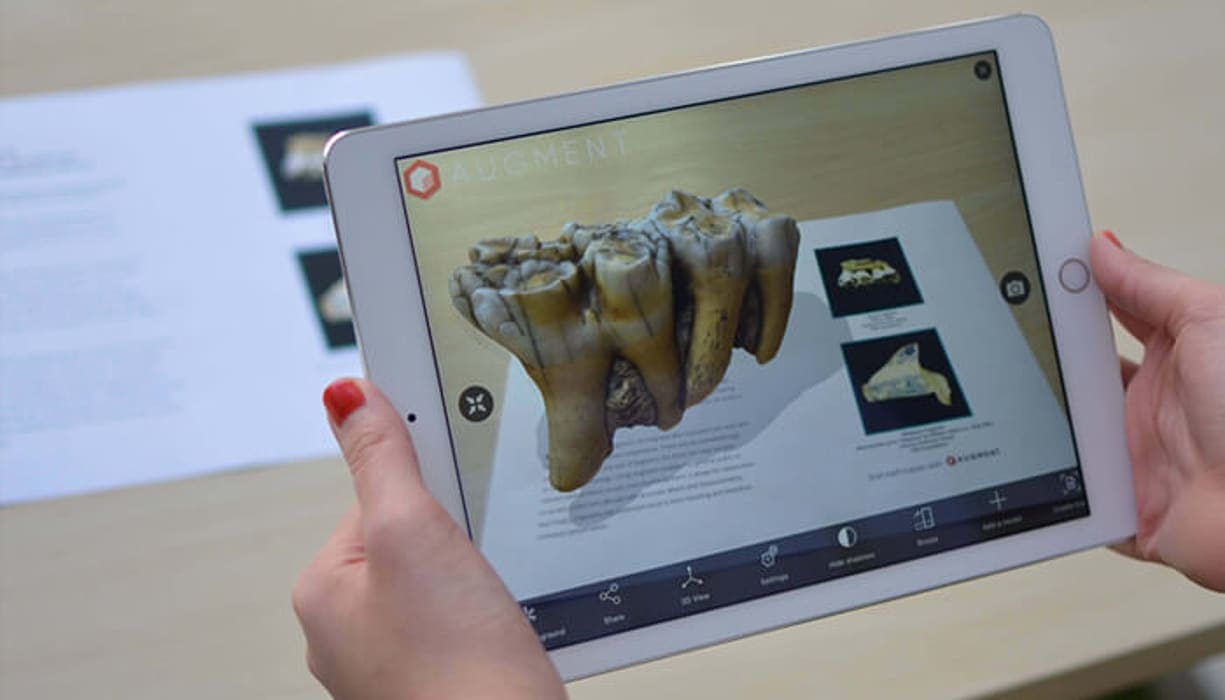
This well developed augmented reality will permit students to see models naturally. They can move them around and get a closer view to understand things quickly. This is perfect while viewing content, such as AR shapes. Here, students can easily analyze their properties with more precision and freedom. Their interest in learning things would increase. Moreover, they will enjoy the lessons without getting bored.
3. Interacting Educational Classes
AR can immensely offer interactive learning experiences. This is possible only when a developer has considered these things and developed an app, which is not just an inanimate on a screen. Numerous augmented reality designers talk about delivering content to live in AR, which is actually possible. Yes, with AR the students can really bring learning to life. It allows them to communicate with the virtual content with freedom. This autonomy is impossible by images, text, or even video content. Go to the wonderful new Human Anatomy Atlas app from the Visible Body just as an example. It is a precise development of how anatomy has been taught earlier with the help of traditional media.
4. Improved Engagement
Students having greater engagement will be intrinsically energetic and motivated. This will ultimately develop a broader understanding of the subject. AR is quickly becoming an everyday part of the lives of students. Therefore, collaboration within learning scenarios means, students are captivating with the content. The proper engagement of students is appropriate to their world. Also, with how they use, as well as interact with the digital content. Don’t take it for granted, I have seen this happening with many kids in my surroundings.
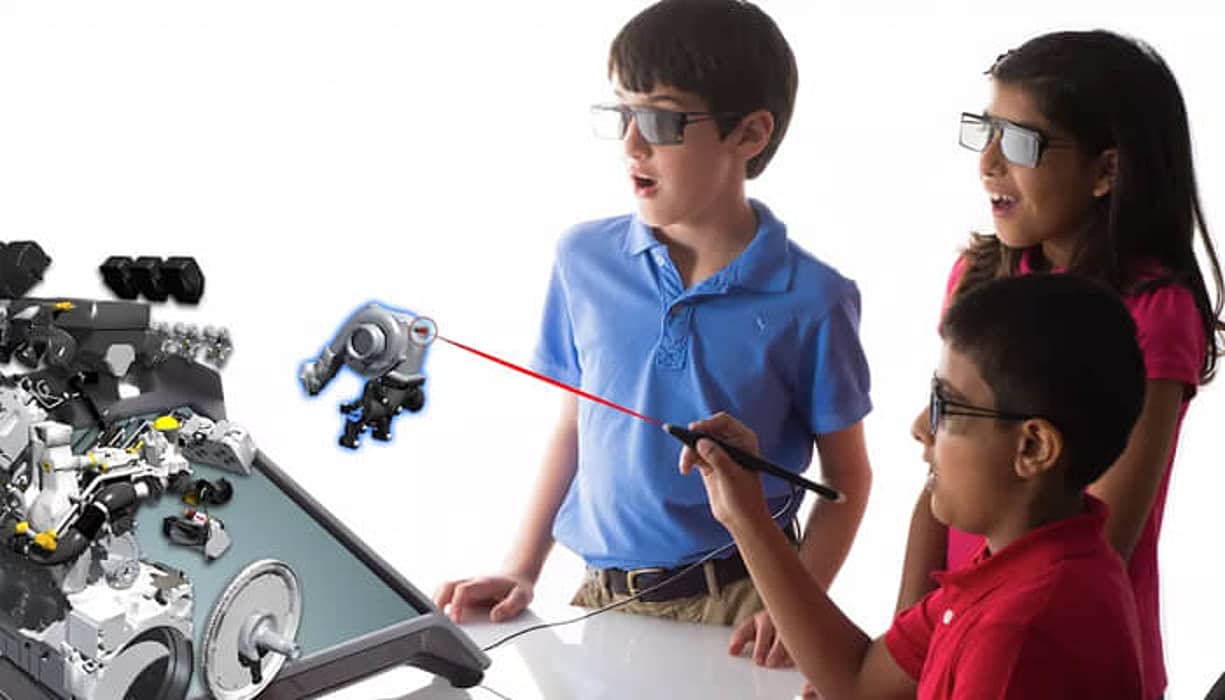
Using AR into exercises may help teachers to engage students in studying by communicating a 3D show. Participating in such sort of things propels students, catches their thoughts for the entire AR classes, and encourages them to learn the subject further.
Association with AR might be a piece of exercise such as a teaser, support of fundamental topics giving additional information to students, or be the primary content of a class. Canadian tech organization CASE changed a wall of the gym (located in school) into a big skeeball game by adding the AR layer to it. In this manner, kids were able to launch elastic balls onto the wall to demolish the model of floating shapes displayed on it by the projector.
5. Enhanced Environment
I lately composed an extensive review of Aurasma after five years of utilizing it in schools. Having the capacity to label interactive media, students made content for classroom displays is undoubtedly a standout amongst the most groundbreaking uses of augmented reality in education. Apart from this, other apps that can be tackled similarly include Zappar, Blippar, and even AR coloring applications like Quiver.
6. Stimulate the Senses
Well-developed AR experiences will be something other than a static, quiet 3D demonstration. It ought to connect students through sound and touch controls. As a result, making a multi-sensory experience that lifts the learning content.
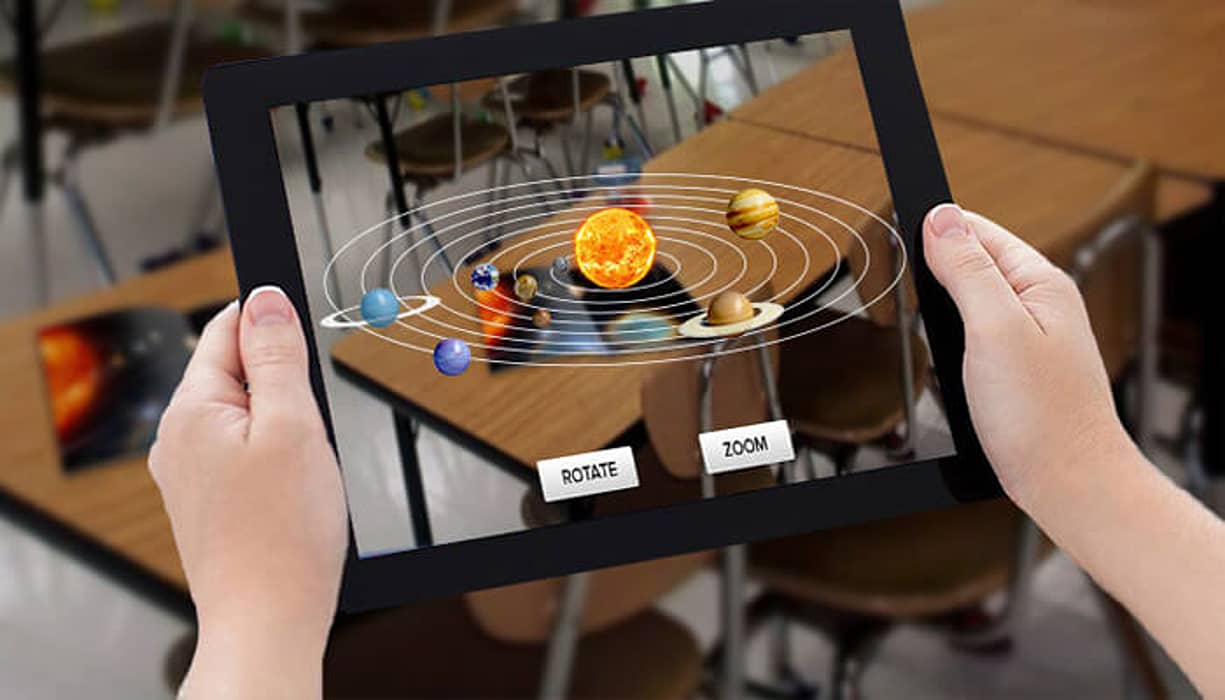
Zookazam is a spectacular case of this. Since the creatures are so similar, they make legitimate sounds, there are various levels of narration, as well as touchscreen controls to coordinate on-screen data overlays.
7. The X-Ray Effect
An easy but extremely powerful concept of augmented reality can allow you to look inside things. If I take an example, then it would be VirtualiTee from Curiscope. Because it really feels as if you are wearing x-ray glasses once you peep inside the human body easily. The effect of the x-ray is not restricted to anatomy though. The old app from Inspyro permit you to see inside Viking longhouses, and many more. I have even seen an exceptional app demo, which allows you to view what food is made up of such as protein, fats, sugar, etc.
8. The Budget Factor in Education
Resources are frequently a matter of logistics and financial aspects in schools, and AR can help in this regard. We should take the case of 3D shapes. It could be very costly to purchase entire class sets of 3D shapes for use in maths however you could deploy a class set of AR shapes utilizing an application like Arloon's Geometry. It is not that you need to replace all the physical resources. This is not I meant. But having the capacity to supplement with virtual assets, for a small amount of the cost would lead numerous educational institutions towards AR in the following couple of years.
9. Clarify Conceptual and Troublesome Concepts
AR has a capacity to contribute in 3D model anything that might be not really understood in a classroom. Opposite theoretical and tough content, the visual models enable the students to get a further understanding of the topic. That works particularly great with visual learners and furthermore helps other people get multiple methods for combining hypothetical material into real concepts.

Polytechnic Institute of Leiria coordinates AR innovation into education procedures to help text and oral explainings of math to students. The individuals who have accessed AR applications realized that procedure as simple, instinctive, and intriguing.
10. Find and Learn
Visitors to museums can access AR by their mobile phones and find historical occasions by investigating different additional content in association with objects. AR gives guests additional data about what they see or even permits to practically prepare some stuff for themselves or take the visit to the past.
On the opposite side, museums generally cannot display the entire collection to the visitors. This is because of space restriction, the absence of assets, or simply high value of items. Utilizing AR abilities give extraordinary chances to museums to introduce more than it is conceivable in typical conditions. Augmented reality gives the capacity to the visitors to utilize their cell phones as a pocket-device through which the area around them gets unending extra layers of data.
11. Objects modeling
Manual components in education, for example, the use of their hands in some test or practical exam, may enable students to better comprehend a topic. Education apps for the classroom will help the medical students to learn the body structure of humans effectively. The use of AR in lessons enable them discovering diverse parts of the body separately and exploring its features.
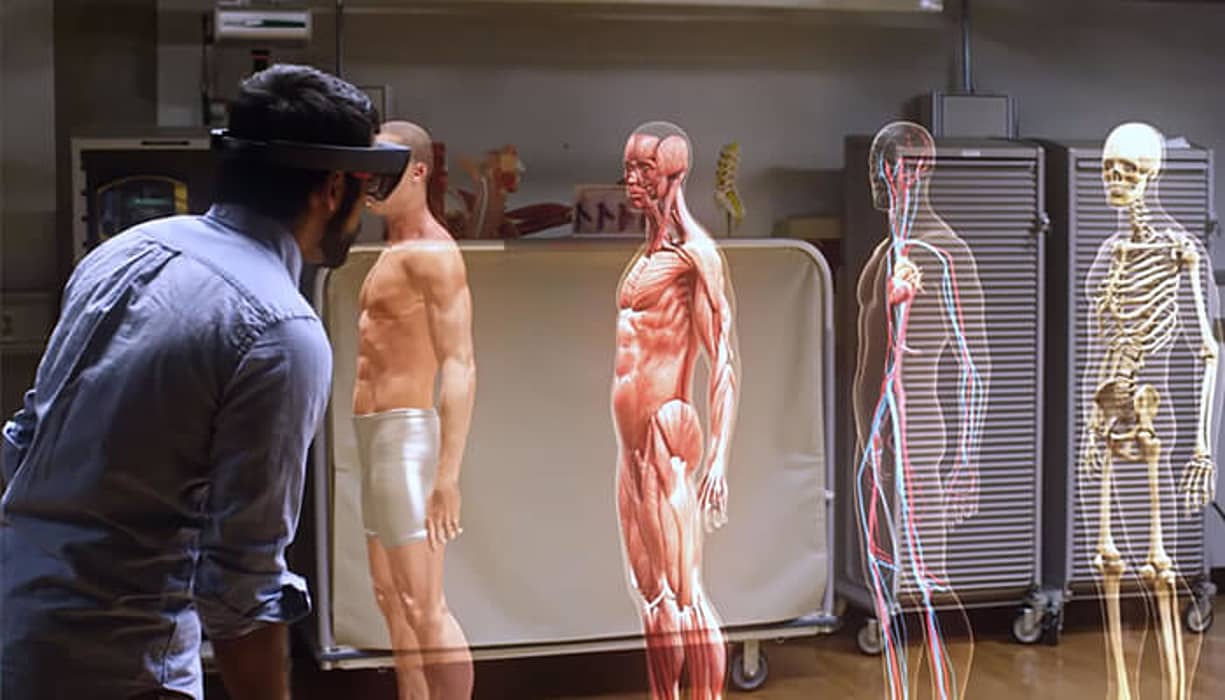
AR enables students to communicate with the 3D display. They can do whatever they want like turning, customizing it by setting transparency, styles, evolving colors, and even parts. Finally, by utilizing extraordinary devices, for instance, hololens rather than advanced mobile phones, students may discover a similar AR model.
Educational AR Student Apps
-
Elements 4D: Elements 4D are designed by DAQRI studio. This app support students in discovering fields of chemistry subjects by permitting to combine multiple elements to check how they act in reality. To begin with it, the students and teachers should have certain triggers on printed cards. In addition, DAQRI’s website has some lesson plans with the already used application. It is appropriate not only for high school but also for elementary and secondary. Elements 4D is available for iOS and Android.
-
Anatomy 4D: Best reasonable for medicinal students’ requirements. It displayed the 3D model of the human body by scanning the application of the printed target. The tool also permits us to interact with it. Users may modify any part of the human body, how human organs function, and how different parts work. This application is available on iOS.
-
Corinth Micro Anatomy: Another utility associated with anatomy application is Corinth Micro Anatomy. It can help medical learners to create interactive human body models’. Organs might be demonstrated one by one or in association with other systems for better clarification of how it functions when all is said and done. This app is accessible on Windows Mobile.
-
Human Heart 3D: Another AR life systems application with a considerably shorter content base, yet substantially more profound. Students may investigate the human heart thoroughly. 3D model of heart finished with animation to see how it functions, utilizing backing of content tips with clarifications about heart's usefulness and anatomy. You can access this application on Android.
-
AugThat: Developed by an educator, AugThat permits utilizing AR in the classroom exercises boost the education process. The application majorly targets students, showing the least inspiration. The application enables educators to engage them in fields of AR science instruction. In addition, AugThat acquired diverse exercises in different configurations that incorporate 360° virtual photographs and 3D experience. It is can be used by all students of any class. The applications are compatible with Android, as well as iOS.
Present Challenges of AR
-
Technical
The fields of augmented reality in science education are many. However, with any complicated system, one needs several components to create a proper functionality system. The augmented reality app development procedure is no exception. If I talk about the biggest hurdles with AR technology then they are public awareness, hardware, education, and content.
-
Social
The key social challenge is that a frequent mobile phone is recently a serious distraction for motorists during driving. There are multiple accidents recorded every year. AR is still at its nascent stage. However, some of the major brands have begun to realize its importance in different industries. What is acting as a hurdle for this in different sectors, including education, is the public unawareness of AR.
Take Away
If the augmented reality needs to be efficiently integrated to education, it requires to push the students to discover. Educators need to view AR as the way to broaden the horizons for their students. By importing education to life, teachers and students can engage with the subject topic in an exciting way.










